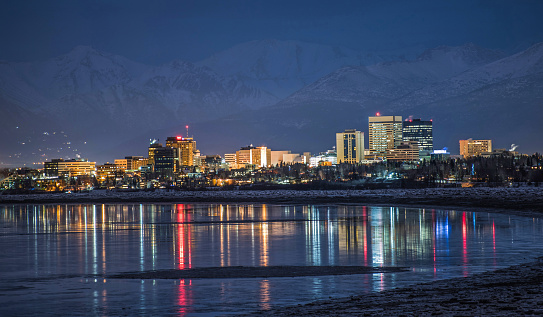
A Brief History of Anchorage, Alaska
Anchorage is Alaska's largest city and home to approximately fifty percent of the entire population of the state. The city is situated on a triangular peninsula bordered on the east by the rugged Chugach Mountains, on the northwest by the Knik Arm, and on the southwest by the Turnagain Arm. Anchorage can trace its origins back to the railroads, as it began as a tent city in 1915 for construction workers on the Alaska Railroad Tours. In its first year, Anchorage grew to a population of 2,000; most of them railroad workers.
By 1920, the town site became incorporated and future growth came in spurts punctuated by farming in the 1930s and military build-ups in the late 1940s. The discovery of oil from the 1960s to the 1980s gave rise to Anchorage as we know it today. Suffering extensive damage during the earthquake in 1964, the city was rebuilt and is the focal point of Alaskan business and social life now. Blessed with the surrounding natural beauty, Anchorage is a modern city on the edge of the old frontier.
